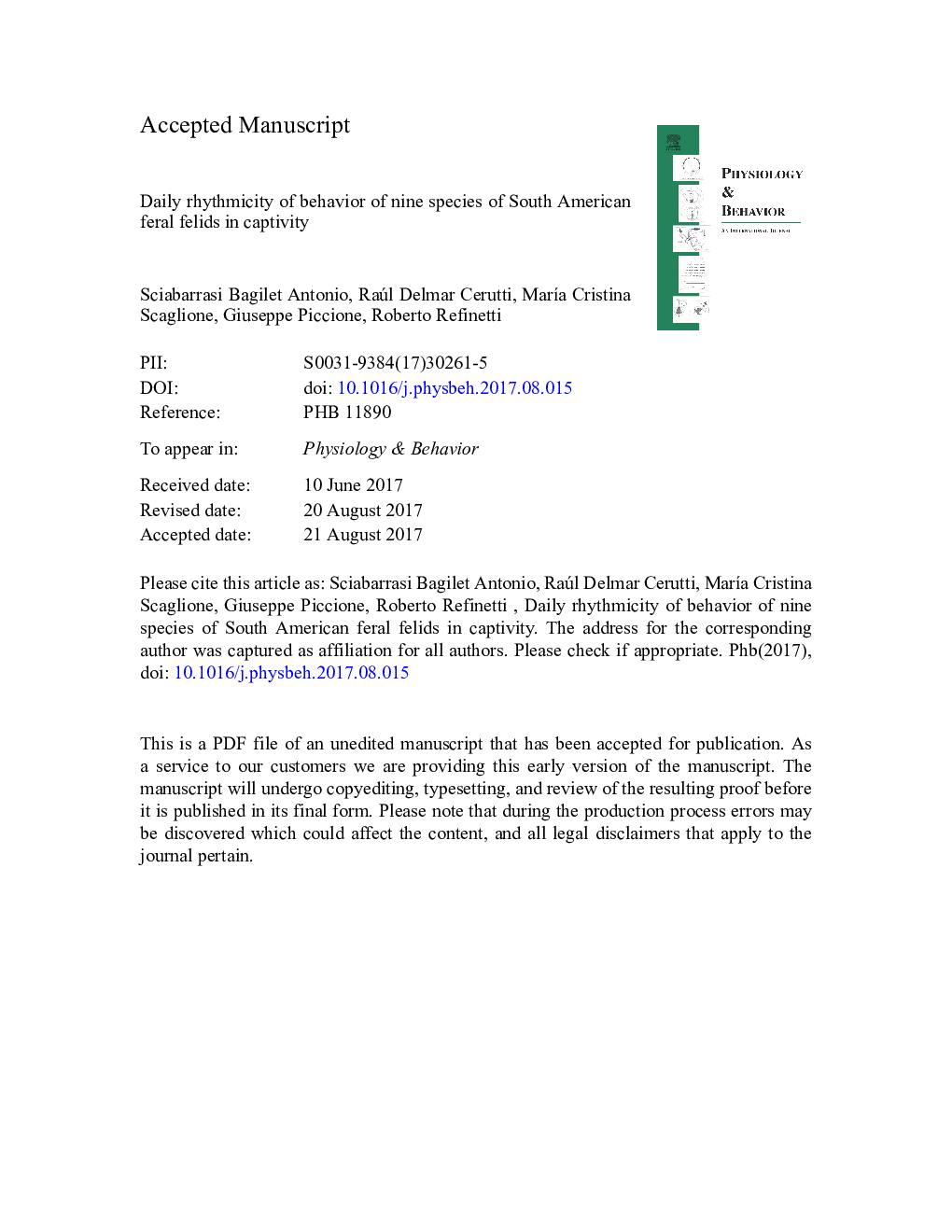| Article ID | Journal | Published Year | Pages | File Type |
|---|---|---|---|---|
| 5593604 | Physiology & Behavior | 2017 | 33 Pages |
Abstract
The authors analyzed the daily activity rhythms of the domestic cat and of eight of the ten feral felid species that are indigenous to South America. All species showed daily rhythmicity of activity in captivity under a natural light-dark cycle. The robustness of the rhythmicity varied from species to species, but the grand mean of 34% was within the range of robustness previously described for mammalian species ranging in size from mice to cattle. There was not a sharp division between diurnal and nocturnal felids. Instead, what was found was a gradient of diurnality going from the predominantly nocturnal margay (72% of activity counts during the night) to the predominantly diurnal jaguarundi (87% of activity counts during the day) with the remaining species lying in between these two extremes. The ecological implications of temporal niche variations are discussed.
Keywords
Related Topics
Life Sciences
Biochemistry, Genetics and Molecular Biology
Physiology
Authors
Sciabarrasi Bagilet Antonio, Raúl Delmar Cerutti, MarÃa Cristina Scaglione, Giuseppe Piccione, Roberto Refinetti,
